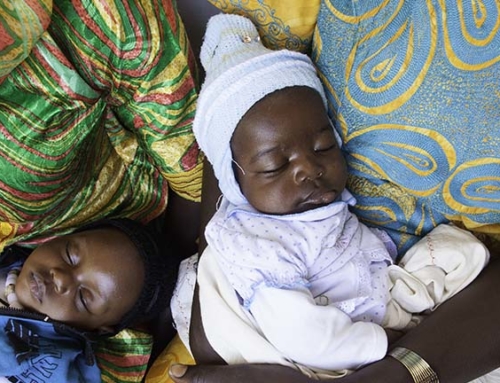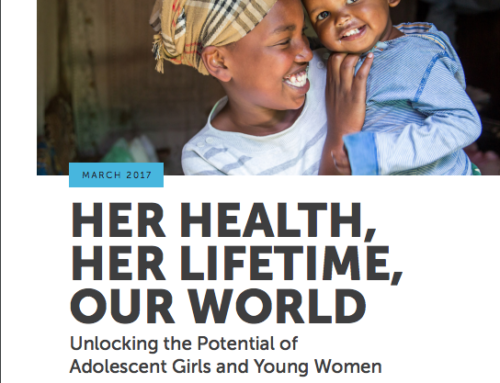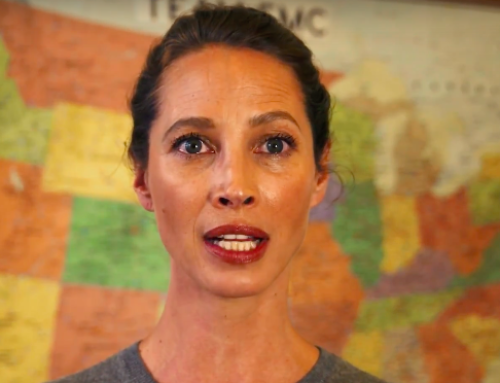From October 18 to 21, 2015, I was in Mexico City to attend
the first
Global Maternal Newborn Health Conference. The theme of the meeting, hosted by Mexico’s
Secretaría de Salud, and co-organized by the
Maternal Health Task Force,
Save the Children, and
USAID’s Maternal and Child Survival Program (MCSP), was “reaching every mother and newborn with quality
care.” Over three and a half days more than 1,000
participants from 75 countries and more than 400
organizations focused on several key issues at the heart
improving maternal-newborn health services globally:
ensuring care is patient-focused; integrating programs to
better serve the needs of mothers and babies; and extending
innovative health services to the poorest and most socially
vulnerable mothers and babies. Speakers acknowledged the
importance of bringing the maternal and neonatal health
communities together — a gathering that many said had not
taken place in recent history — and emphasized that while
the world has made progress since 1990 in reducing maternal
and child mortality, significant gaps remain. Through a
series of high-level plenaries, as well as smaller panels
and side events, participants agreed that the new
Sustainable Development Goals‘ (SDGs) focus on equity offers an opportunity to address
both the “unfinished” MDG maternal, neonatal and child
health agenda and anticipate the needs of today’s girls and
adolescents, many of whom will be tomorrow’s mothers.
Yet, like so many countries around the world, Mexico
continues to face challenges when it comes to reaching the
most vulnerable mothers and babies with quality health care.
Mexico is not expected to reach its MDG 5 target of reducing
maternal deaths 3/4 from 88 per 100,000 live births in 1990
to 22 per 100,000 by the end of 2015. Hemorrhage and
hypertension, as well as complications from diabetes and
other chronic conditions, are the leading causes of maternal
death in Mexico. As overall child mortality has decreased,
newborn deaths now account for 53% of all deaths among
children under the age of five. Mothers and children living
in the most impoverished areas of the country — the
mountainous southeastern states of Oaxaca, Guerrero, and
Chiapas, which also have high concentrations of indigenous
populations — face the greatest challenges in accessing
quality health care services.
A new book presented at the conference,
25 años de buenas prácticas para disminuir la mortalidad materna en México
spotlighted the role that academic associations and civil
society have played in advocating for a rights-based
approach in ensuring quality health care is available to
socially marginal women. The editors, who include midwives,
obstetricians, journalists, and social scientists, credit
the formation of the
Comité Promotor por una Maternidad Segura en Mexico
(CPMSM) in 1993 with bringing government, academia and civil
society together to better monitor women’s access to quality
maternal care services. The chapters identify six factors –
citizen engagement in processes to improve maternal health;
independent monitoring of public programs; an intercultural
focus on maternal health services; strengthening strategic
actors in the policymaking arena; an emphasis on
strengthening the training and professionalization of
midwives; and the evolution of information systems for
health — that have facilitated a greater emphasis on
reducing maternal mortality in Mexico over the past three
decades. Through careful case studies and featured
interviews with women across Mexico, the authors emphasize
the importance of using a human rights framework to
prioritize interventions to protect Mexico’s poorest mothers
and their newborns from preventable early death.
Arriving every day at the conference venue, the Hilton
Reforma on Mexico City’s Avenida Juárez, I was reminded of a
time when the rights of the most impoverished mothers and
their children were all but ignored within Mexico’s public
health services. Across the beautiful Alameda Park from the
Hilton sits a colonial-era building once known as the
Hospital Morelos, the city’s public hospital for women
diagnosed with syphilis and other sexually transmitted
infections. (The building is now the
Franz Meyer Museum
and holds Latin America’s largest collection of decorative
arts). As I approached the Hilton each morning and saw the
old hospital, I recalled that while carrying out archival
research for a
book
on public health in Mexico City after the 1910 Revolution, I
uncovered letters to officials from patients who identified
themselves as “mujeres públicas,” or sex workers, and
decried the deplorable conditions at the facility. Following
a decade of rural violence and social upheaval, migrants
flooded to Mexico City in the 1920s; lacking education,
skills, or families to support them, thousands of the young
women within that migrant stream became involved in the
city’s sex trade and were infected by clients with syphilis,
gonorrhea and other deadly and disfiguring diseases.
Interned in the hospital against their will, they complained
that they were frequently compelled to sleep two or more to
a bed and were forbidden to have their children stay with –
or even visit — them as they languished on the wards for
months at a time to undergo painful treatments of dubious
efficacy. Yet in letters to doctors, legislators, and
President Plutarco Elías Calles, himself, the women asserted
their dignity and right to be treated as “decent people,”
reminding officials that even if they were engaged in what
they acknowledged might be viewed as undesirable (albeit not
illegal) work, they were nevertheless caring mothers who
loved their children and worried about their welfare.
Three plenary discussions at the Global Maternal Newborn
Health Conference focused participants’ attention on themes
of quality of care, program integration, the right to
health, and equity. Like the sick women in 1920s Mexico
City, the plenary speakers emphasized patients’ dignity —
and the importance of their care being evidence-based,
reliable, respectful, and acceptable to them — as they
debated the definition of quality care for mothers and
newborns during the session on the first afternoon. The
plenary on integration that took place Tuesday morning
similarly highlighted the importance of placing mothers and
babies at the heart of any service scheme, with speakers
noting that program integration can be costlier, more
time-consuming, and less convenient for health providers,
but if integrating programs benefits patients then it should
be a priority. In the final plenary session, speakers
focused on equity and rights, noting that failing to ensure
mothers access to quality health services, including sexual
and reproductive health services, effectively denies their
agency as political actors; if women are not healthy, they
can’t act effectively to advance their own interests, much
less the interests of their children.
By the close of the conference, I found myself inspired by
the many achievements in improving the quality of maternal
and newborn care that were reported and hopeful that the
lessons gleaned from diverse fields and country contexts
will be effectively shared and applied in new settings. The
message that promoting sustainable quality health care for
mothers and babies means thinking about how to improve MNCH
programs in relation to other key SDG goals, including
access to modern energy supplies, ecosystem conservation,
and availability of water and sanitation services, also
resonated for me. I agreed with many attendees who commented
in the final session that if there is to be a second Global
Maternal Newborn Health Conference, it will be essential to
bring the politicians, decision-makers, and finance
officials to the gathering and to ensure that they hear,
first-hand, from mothers who can share their experiences and
express their views.
Unlike the officials in 1920s Mexico who, despite the
mandate of social revolution, nevertheless ignored poor
patients’ demands for respect, rights, and better health
care, those at the October meetings understand that it will
be difficult to reach the SDGs’ targets for reducing
maternal and neonatal mortality by 2030 without the active
engagement of mothers, themselves. Moving that conversation
between vulnerable mothers and public officials beyond
Mexico City’s Alameda and into dispensaries, clinics and
hospitals around the world is the right thing to do.






